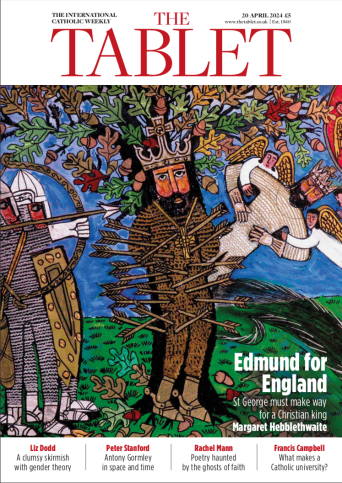Reviewed by Jimmy Burns
Quercus, 501pp, £20)
Tablet Bookshop price £00.00
Tel 01420 592974
People still living under the illusion that football is nothing more that 22 human beings – usually males – kicking a ball around for 90 minutes should make this hefty tome by Andres Campomar part of their required summer reading, and without delay.
With the start of the football World Cup championship in Brazil just days away, ¡Golazo! (literally, “What a Goal!”) is a timely, intelligent and entertaining account of the development of football in Latin America, which celebrates its brilliance as well as exploring the extent of the game’s cultural and political dimension, defining, as it does, national identities, and becoming on occasions, a matter of life and death.
In his wide-ranging and comprehensive coverage of the continent, Uruguayan-born Campomar has an understandable bias towards the River Plate region, not least because he is a descendant of Dr Enrique Buero, the man who made sure that the first ever World Cup final was played in his home city of Montevideo. Campomar, a publishing director who wrote this book as a hobby, is at his most self-assured in describing how the British introduced the first football games to Uruguay and neighbouring Argentina, before the local game developed its own set of skills and attitudes thanks mainly to the Italians and Spaniards who came to represent the bulk of the immigrant society.
If on rare occasions a little too academic, this is a readable and incisive history, a “serious” football book. After tracing the first kick-arounds to the early Latin American Indians, Campomar notes that football took off in a way the other neocolonial import, cricket, never did, despite the suggestion early on that the Latinos might benefit from the civilising nature of the more languid Anglo-Saxon gentleman’s sport. In a wonderfully evocative historic scene we learn that in Buenos Aires on 3 February 1852, “as the shadows began to lengthen on that late summer’s afternoon”, two all-British cricket teams stopped play to give a polite round of applause as the dejected Federalist troops of the caudillo Juan Manuel de Rosas filed past the ground on their way to exile after being defeated by their fellow countrymen at the Battle of Caseros.
Why did cricket fail to become popular among the locals in Latin America when it is so much loved to this day in Asian and Caribbean countries that also experienced British influence? The answer, Campomar suggests, lay in the declining influence of the British on the nascent Latin American football culture. Latin American countries developed a sense of identity by modifying the science of the game and fashioning a style of their own which was more individualistic, making more use of dribbling and creative goal scoring. Latin American football was fast and – when necessary – dishonest: match-fixing became endemic, goals were scored with the stealthy use of the hand (remember Maradona’s “Hand of God”?), and the control of clubs and even national teams passed to murderous drug cartels.
In the twentieth century, it was Uruguay that despite its small size led the way in football’s emancipation, taking Olympic gold medals in 1924 and 1928 and then hosting and winning the inaugural World Cup in 1930 with a style which combined quick, short passing with the physicality that characterised the British pioneers. Argentina and Brazil went on to be amongst the world’s football giants, producing not just world champions, but some of the greatest footballers of all time, led by Maradona and Pele and followed by the likes of the FC Barcelona players, the Argentinian Lionel Messi and the Brazilian Neymar, expected to be two of the star performers in this summer’s World Cup.
While noting the best and worst moments in Latin American football, the main strength of ¡Golazo! lies in the way its perspective extends to the politics – real and mythologised – that lie beyond the sport. As Campomar notes, for much of its history Latin America has squandered its economic potential through poor governance. Football provides a means of escape as well as a sense of belonging. It can also be fated to prove a short-term fix for a country’s leaders, as the military junta discovered soon after Argentina won the 1978 World Cup just a few blocks away from a notorious detention and torture camp. In contrast the more democratic World Cup in Mexico in 1986 will be remembered for the best goal ever scored in the history of the game – Diego Maradona’s in Argentina’s quarter-final match against England, on the way to the River Plate country once again becoming World Champions. Maradona’s first goal in that legendary match was a cheat, but his second was sublime and Campomar dotes on it.
Thereafter Campomar wisely devotes only a short paragraph to the upcoming World Cup 2014 in Brazil, leaving its coverage to newspapers and television. He does however point out – with this weighty and fascinating cultural history behind him – that there is much at stake for the host nation. Win or lose, Brazilian politics will not remain idle. There is a real prospect that the current simmering social unrest will explode. As for their great continental rival Argentina, to beat Brazil and become champions of the world again, this time with a fellow countryman as pope, might risk being taken as confirmation that they have been blessed rather than scandalised by the Hand of God.



 Loading ...
Loading ...
What do you think?
You can post as a subscriber user...
User Comments (0)